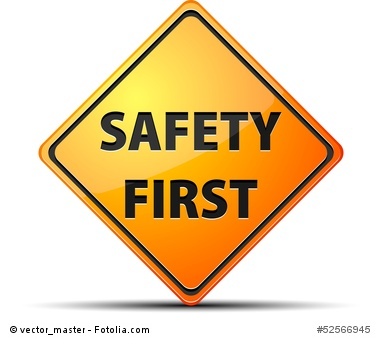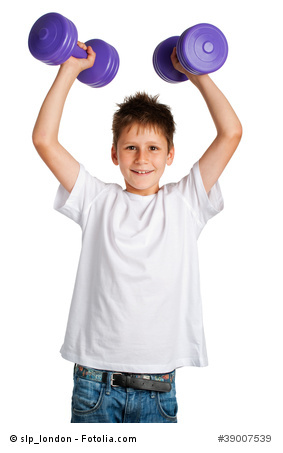I remember being 12 years old and in Middle School when I had just began youth resistance training by lifting weights. I told one of my classmates that I had begun a resistance training program and his response to me was something along the lines of, “Well, that’s awesome that you’re doing weight lifting cause you’re gonna get a lot of muscles, but your growth will be stunted…I’d still take the muscular body over a few inches though.”
Can you guess what my response from that was???

I was in complete shock! I didn’t want to stunt my growth any further because I was already shorter than everyone else! Since I was young and believed pretty much anything I was told, I took his word as gospel and figured if you lifted weights you’d be shorter. Keep in mind it was not only this particular classmate telling me this, it was also several adults telling me to stay clear of weights and even a doctor of mine sounding very concerned when I told him I wanted to do strength training!
Thankfully as several months went by, other people began telling me differently and I missed doing weight training anyhow. So I went back into a strength training routine and haven’t looked back since then. Now that I am looking back on those days, I am extremely glad I got back into it when I did and am not picking it up in my 20’s. I will address that point more later on.
Now that I am older and wiser, I know that resistance training in children and adolescents is a good thing that should be encouraged as it provides a wide variety of benefits. As with all physical activities however, such as weight training, there are risks involved, which I shall discuss and how to mitigate them and be as safe as possible to minimize the risk of injury.
So now, allow me to convince you if you are a parent to allow your child to get into a resistance training program (I will explain exactly what I mean by a resistance training program very soon). Or perhaps you are a younger individual yourself and have found this blog somehow, so allow me to convince you if that is the case!
What Youth Resistance Training is and Myths Associated with it

What I mean by Resistance Training
Before I delve into major myths associated with youth resistance training, let me first explain what I mean by resistance training, which I use interchangeably with the term strength training. The article I am getting this information from and paraphrasing is from the British Association of Sport and Exercise Science called “Guidelines For Resistance Exercise In Young People.” Resistance training involves exercises that put a demand on the muscles to work, which can involve many things. One type of resistance exercise is body-weight exercises like jumping or pull-ups. Another type is weight bearing exercises like hiking up a hill or walking up a flight of stairs. Another type of resistance exercise involves things that apply resistance to the muscles such as free weights or machine weights. Throughout this blog post, the last type of resistance exercise is primarily the type I will be referring to since that seems to be the most controversial of all, although I still include the other definitions of resistance training when I mention it.
So with that explained, I am now going to delve into the major myths associated with youth resistance training and explain why they are misguided.
Myths associated with Youth Resistance Training
1. It will stunt your growth

According to an article by Katherine Dahab and Teri McCambridge titled “Strength Training in Children and Adolescents”, a common myth that pops up in people’s minds when they think of youth resistance training is that it will damage your growth plates and stunt your growth. In fact, a strength training program that children and adolescents participate in that is well supervised has no greater risk of injury than any other sport or activity that youths may participate in. A well designed program constructed for an athlete’s age and physical structure and development with the proper weight, repetitions and sets should not excessively stress the growth plates. In fact, the article states that sports that involve a lot of torque with repetitive impact such as gymnastics and baseball involve a greater risk of damaging the growth plates than weight lifting.
When fractures to the growth plates are involved with weight lifting in rare cases, it is due to using improper weight, poor technique, not using equipment appropriately and not having a qualified fitness professional supervising to make sure proper protocol is being followed in youth resistance training programs.
2. It won’t make you stronger until you produce more testosterone

This seems to be a common myth I hear from people, saying that weight lifting won’t make children stronger, when this couldn’t be further from the truth. Although it may be harder to gain bigger muscles as a youth who doesn’t make enough testosterone, it is still possible. According to the article by Katherine Dahab and Teri McCambridge titled “Strength Training in Children and Adolescents” mentioned above, axial MRI studies have shown that simple physical training and not necessarily strength training, will produce muscle growth of the psoas (a hip flexor muscle), multifidus (muscle that stabilizes the vertebral column of the spine) and erector spinae muscles (muscles that extend the vertebral column of the spine). The article suggests that participating in sports alone over long periods of time can lead to youths getting significant gains in not only strength, but muscle size as well.
The article I just previously mentioned above also says that young athletes who participate in a youth resistance training program can increase their strength by as much as 30-50% after only 8-12 weeks of a well constructed strength development program. It is through neuromuscular adaptations that children will derive the vast majority of their strength gains from, which I will describe more below in the major benefits section of youth resistance training.
3. It is unsafe for children to lift weights
It is only unsafe for children to lift weights when they are not being supervised by a qualified fitness instructor. In fact, a child who lifts weights is likely to derive benefits from that activity that will indirectly help to prevent them being injured while playing sports according to the article called “Strength Training in Children and Adolescents” mentioned above. The article gives many examples of how weight lifting in children may help to prevent injuries, such as describing how strengthening the quads and hamstrings may reduce injuries to the legs in football players. It also mentions how working out the shoulder blade muscles along with the rotator cuff may help to prevent shoulder injuries associated with swimming.
3 Major Benefits of Youth Resistance Training
Now that a few of the major myths associated with youth resistance training have been addressed, lets go over 3 major benefits.
1. Increased Bone Density

Were you so lazy as a kid that you made Garfield look like LeBron James? I hope not! What you may not know about bone density is that what you have done in your past, can profoundly effect your future. According to an article by Matti J. Valimaki et al. titled “Exercise, smoking, and calcium intake during adolescence and early adulthood as determinants of peak bone mass”, the peak bone mass that you attain as a young adult will be a major factor in your bone mass when you are older. Keep in mind that although genetics may play a very significant role in your peak bone mass, that exercise plays a big part as well.
According to the International Osteoporosis Foundation with regards to bone development in women, the amount of bone they accumulate as a girl from the ages of 11-13 years old will be the equivalent to the amount of bone they lose following 30 years post menopause. Also, if you manage to get a 10% increase in bone mass as a child, that cuts your risk of getting a fracture as an adult in half. Because women have less dense bones than men, it is especially prudent for them to do as much as possible to increase their bone density while they are young.
Because bone health is so critical, it makes sense to do as much as possible to maintain healthy bones. The article by Matti J. Valimaki et al. that I mentioned above explains that as much as 20% of peak bone density may be due to environmental factors like calcium intake, smoking and exercising. So knowing that a 10% increase in bone mass as a child will do so much for your health in the future, it would make sense to encourage the kids of today to engage in youth resistance training so that they may benefit in the future.
2. Increased Strength

There always seems to appear so much doubt among people when told that youth resistance training will make kids stronger. People seem to think that until a child hits puberty and starts getting bathed in teenage hormones that can make them go crazy and appear to be your worst nightmare, that they won’t get stronger or build muscle. Sure, building muscle may be very hard due to low testosterone levels, but getting stronger is definitely within the realm of possibility.
So you are probably asking, “How does one get stronger without building muscle?” Well, I’m glad you asked!
According to the Official Journal Of The American Academy Of Pediatrics in an article called, “Strength Training by Children and Adolescents”, it is through something known as neuromuscular learning that one may get stronger without an increase in muscle size. This ties into neuromuscular adaptations that I mentioned above.
So what is neuromuscular learning exactly and how does it work? Basically, skeletal muscle fibers in your body are innervated by motor neurons, or turned on by them if you will. A motor neuron that activates skeletal muscle fibers and allows them to contract is known together as a motor unit. Multiple motor units work together to help contract a muscle. As an activity like the bench press for example is done more often, motor units will become more efficient at signaling the muscles performing the exercise to contract. Not only will this mean less delay with the nerve impulse activating the muscle, but it will also mean more motor neurons firing with each contraction according to the Official Journal Of The American Academy Of Pediatrics article mentioned previously. This neuromuscular learning is what accounts for a great majority of the increased strength that youngsters experience in youth resistance training programs.
Yet another interesting tidbit of information. The article that I already mentioned above from the British Association of Sport and Exercise Science titled “Guidelines For Resistance Exercise In Young People” refers to several studies that come to the conclusion that resistance training, including free weight training, has benefited young people and pre-pubescent boys and girls (less than 12 for boys and 13 for girls) as well as children ranging from 6-18 years old. The article says that the majority of effective programs are at least 8 weeks long and involve performing the exercise for 2-3 sets at 6-15 repetitions at 50-100% of the maximal effort.
The article explains that, “Based on the available evidence it appears that children of all maturity stages can enhance strength through resistance exercise.”
3. Increased Confidence and Sense of Well-Being

I can definitely say that lifting weights has given me improved confidence and higher self-esteem and I can say with absolute certainty that it has done the same for others. We live in a superficial world that judges us heavily based on our looks, so the more of an edge we can get in the looks department, the more confident we can be. Of course there are many things that go into being confident such as our accomplishments, the way we perceive ourselves, the way others perceive us and more. Looking our best though definitely goes a long way in allowing us to feel better about ourselves.
According to the British Association of Sport and Exercise Science article I mentioned 2 paragraphs ago, exercise helps adolescents and children feel better about themselves, especially if they had low self-esteem initially. Not only does the exercise itself help along with making young athletes look better, feel better and become healthier, it will also give them opportunity to socialize with one another while they participate in the youth resistance training program together. All of these factors are without a doubt extremely positive things especially in a younger individual and will help contribute to a greater sense of well-being.
Safety in a Youth Resistance Training Program

Now that the most prevailing myths of children lifting weights have been smashed as well as the major benefits of a youth resistance training program being done, it is time to delve into the safety issues, which is the most important thing of all.
Injuries and Trainer Qualifications
According to an article (which I will be paraphrasing for a lot of this section) by Avery D. Faigenbaum et al. titled “Injury Trends and Prevention in Youth Resistance Training”, when looking at those aged 8-13 years old who engaged in youth resistance training, about 2 out of 3 injuries are to either the hands or feet, with 77% of total injuries being accidental in nature. Injuries related to accidents in this age group are far higher than older groups, with the 23-30 year old group having 27.5% of their injuries being accidental. The high rate of injury related accidents in youth who lift weights simply highlights the need to have adequate supervision being provided while they are working out.
The article also found that the trunk and low back were common areas of injury and should be addressed. Several ways suggested of addressing this were to work out the posterior chain muscles, which include the erector spinae muscles, the glutes and the hamstrings. Also, proper control of the hips and trunk should be taught and instilled in those who engage in youth resistance training to be sure they have optimal control of their body. Proper form should be taught first in an exercise before adding weight to it. This is especially pertinent when teaching complex exercises like a Power Clean, which can be taught with a broomstick or wooden dowel.
It is very important that the person supervising those engaged in the youth resistance training program be adequately qualified!

Their education level should be the equivalent of having an exercise science or physical education degree at least. The person supervising the youth resistance training program should know how to properly progress exercises, how many repetitions should be done and how to cater a strength program with younger individuals in mind. They should instruct the youth in how to adequately handle weight lifting equipment like dumbbells, barbells and plates. Proper instruction on spotting and gym etiquette should also not be left out and addressed properly.
On top of giving instructions, the youth who are receiving the instructions should be able to follow them! In general though, most 7 and 8 year-olds are ready to attempt some form of resistance exercise according to the article I mentioned in this section.
Further Recommendations
I’m basically paraphrasing this information from what I got from the Official Journal Of The American Academy Of Pediatrics article I referenced above in an earlier section of this blog post.
- Competitive weight lifting should be avoided until full skeletal maturity is reached.
- A medical evaluation should be given before attempting a youth resistance training program.
- A warm-up and cool-down period should be included in the resistance training program.
- 8-15 repetitions with good form should be completed before considering adding weight.
- All major muscle groups should be addressed in the exercise program.
- Proper skill should be instilled in how to perform an exercise before attempting to add weight.

Conclusion
There are many myths associated with youth resistance training programs, which is unfortunate because these myths are keeping many young people from experiencing the physical and mental benefits of a strength training program. With proper supervision given by someone who has sufficient knowledge in exercise science or physical education, the risk of injury is minimized greatly and those participating in the program may reap the benefits. Because there is a narrow window in youth where one may gain bone density, it is important to strength train during that time period to stave off osteoporosis later in life. Increased strength, health, awareness of the body and greater confidence are all more important benefits to be offered by a youth resistance training program.
Works Cited:
Valimaki, M. J. et al. “Exercise, smoking, and calcium intake during adolescence and early adulthood as determinants of peak bone mass.” British Medical Journal. 1994; 309: 230-235.
British Association of Sport and Exercise Science. “Guidelines For Resistance Exercise In Young People.” REACH Group. Liverpool John Moores University.
American Academy of Pediatrics. “Strength Training by Children and Adolescents.” Pediatrics. 2001; 107(6): 1470-1471.
International Osteoporosis Foundation. “Bone Development in Young People.” http://www.iofbonehealth.org/bone-development-young-people-0
Faigenbaum, A. D. et al. “Injury Trends and Prevention in Youth Resistance Training.” Strength and Conditioning Journal. 2011; 33(3): 1-6.
